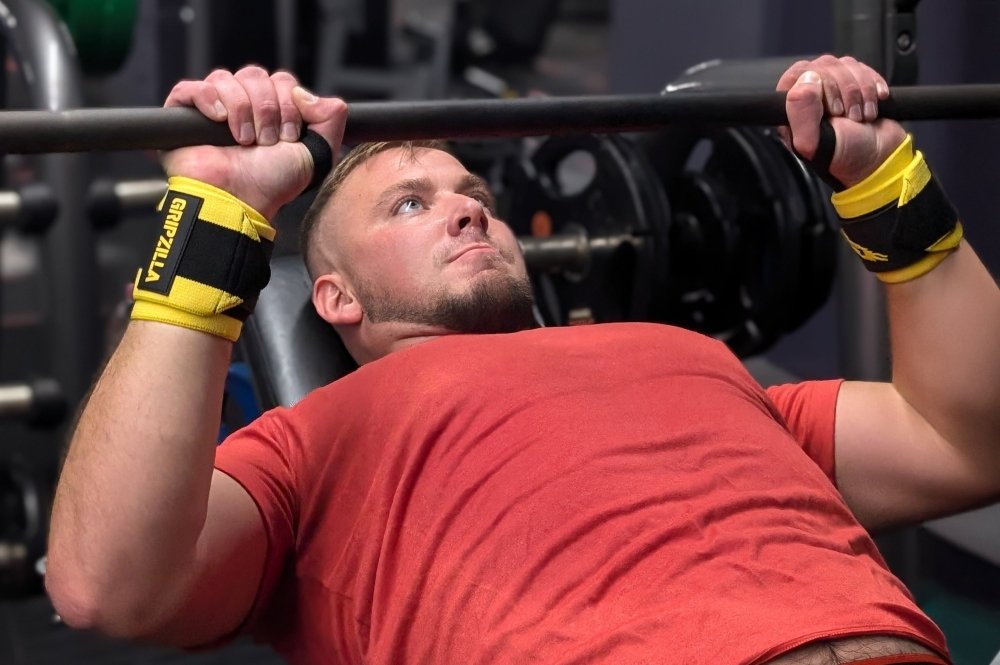Many fitness beginners and even advanced athletes often say “my wrist hurts from push-ups”.
This is one of the most common workout complaints because push-ups put direct pressure on the wrist joint.
If you ignore the pain, it can turn into a push-up wrist injury that stops you from training altogether.
The good news is that there are clear reasons why your wrist hurts during push-ups, and there are many simple fixes, supports, and alternatives that allow you to keep training safely.
Why Wrist Hurts During Push-Ups
When you do a push-up, your wrists are forced into an extended position. This angle puts stress on the small ligaments, tendons, and bones in the wrist.
Over time, this stress can cause wrist pain during push-ups. Some of the main causes include:
- Weak wrist and forearm muscles: If the surrounding muscles are not strong, the wrist joint absorbs all the pressure.
- Incorrect push-up form: Hands placed too far forward or inward can lead to wrist strain.
- Hard floor pressure: Doing push-ups on a hard surface increases the impact on the wrist joint.
- Old wrist injuries: A past sprain or fracture makes the wrist more sensitive during push-ups.
- Overtraining: Too many push-ups without rest can lead to overuse injuries.
If your wrist hurts after push-ups, it usually means your body is signaling for better technique, strength training, or extra support.
How to Stop Wrist Pain From Push-Ups
If you want to know how to stop wrist pain from push-ups, follow these steps before and during your workout:
- Warm Up the Wrists: Rotate your wrists, stretch your fingers, and loosen your forearms before push-ups.
- Fix Hand Position: Place hands directly under shoulders, fingers spread wide for balance.
- Use a Padded Surface: A yoga mat or soft floor reduces direct pressure.
- Start Slow: Lower your reps and sets until your wrists adapt.
- Take Rest Days: If you push through pain, it can lead to a serious wrist injury from push-ups.
Making these small changes often solves the problem and allows you to do push-ups without discomfort.
How to Strengthen Your Wrists
If push-ups are leaving your wrists sore, the answer isn’t to quit, it’s to build stronger wrists.
Just like legs or abs, your wrists need their own training. Strong wrists spread the pressure better and keep you safe during bodyweight moves.
Here are a few simple ways to build them up:
1. Grip Trainers
Tools like our Hand Grippers let you train your forearm and wrist strength anywhere—at your desk, watching TV, or in between workouts.
2. Resistance Rings
Our Gripper Rings challenge your grip and wrist stability. Squeeze and hold to fire up the smaller muscles that protect your wrist.
3. Dynamic Resistance
The Tornado Trainer adds a twist, literally. Its spinning resistance builds wrist endurance, grip power, and stability in ways simple weights can’t.
Push-Up Variations for Wrist Pain
You don’t have to give up push-ups completely. Instead, try these push-up variations for weak wrists:
Incline Push-Ups – Place your hands on a bench, step, or wall to reduce body weight pressure.
Fist Push-Ups – Do push-ups on your knuckles instead of palms. This keeps the wrist straight and pain-free.
Neutral Grip Push-Ups – Use dumbbells or push-up bars to keep wrists in a neutral, natural position.
Knee Push-Ups – Lower intensity by dropping to your knees, reducing the load on your wrists.
These variations let you continue training your chest, arms, and core without stressing the wrists.
Wrist Strengthening Exercises to Prevent Push-Up Injuries
To prevent long-term wrist pain from exercise, you need stronger wrists. Simple wrist strengthening exercises include:
- Wrist Flexion and Extension Stretches: Hold your hand palm up, gently press fingers back with the other hand.
- Wrist Rotations: Make small circles with both wrists before every workout.
- Forearm Plank Holds: Do planks on your forearms to strengthen stabilizing muscles.
- Light Dumbbell Wrist Curls: Slowly lift and lower a light weight to build strength.
Doing these daily can make your wrists more flexible and resilient, reducing pain in future push-ups.
Push-Up Alternatives for Wrist Pain
If the pain is severe, try these push-up alternatives for wrist pain that target the same muscles:
- Chest Press with Dumbbells – Works chest and arms without bending wrists.
- Resistance Band Press – A low-impact way to strengthen chest muscles.
- Wall Push-Ups – Simple and safe for beginners or those recovering from wrist injuries.
These alternatives allow you to stay consistent with your workout while giving your wrists time to heal.
When to See a Doctor for Push-Up Wrist Pain
Most cases of push-up wrist pain are minor and go away with rest, support, and better technique. However, you should see a doctor if:
- The pain is sharp and constant.
- The wrist swells after push-ups.
- You feel numbness or tingling.
- Pain lasts more than a few weeks.
These can be signs of a serious wrist injury from push-ups such as tendonitis or a fracture.
What To Do?
If your wrist hurts from push-ups, you are not alone. This problem is common, but it doesn’t mean you have to quit exercising.
By fixing your push-up form, using wrist supports, trying safer variations, and doing wrist strengthening exercises, you can protect your joints and keep progressing.



